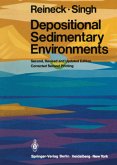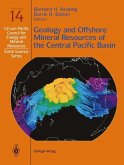The reconstruction of ancient marine environments is an important task of the Earth Sciences, of great interest to geology, pure and applied, to oceanography and climatology, as well as to such fields as ecology and evolution. In principle, such reconstructions are based on the actualistic approach of "the present is the key to the past." Since the deciphering of past environmental changes, either nat ural or man-made, has considerable bearing on planning, the past may provide a key to the future. Paleoenvironmental interpretations in the marine realm are based to a great extent on assemblages of fossils recovered from ancient sediments in outcrops and from land-based or submarine drillings. Observable lateral sequences of assemblages in contemporaneous strata, the known or assumed functional or adaptive significance of preserved skeletal struc tures, as well as their evolution through time and space, provide by themselves indications of ancient environmental settings. In some cases even present-day eco logical considerations may be derived from analysis of fossils.
Hinweis: Dieser Artikel kann nur an eine deutsche Lieferadresse ausgeliefert werden.
Hinweis: Dieser Artikel kann nur an eine deutsche Lieferadresse ausgeliefert werden.









